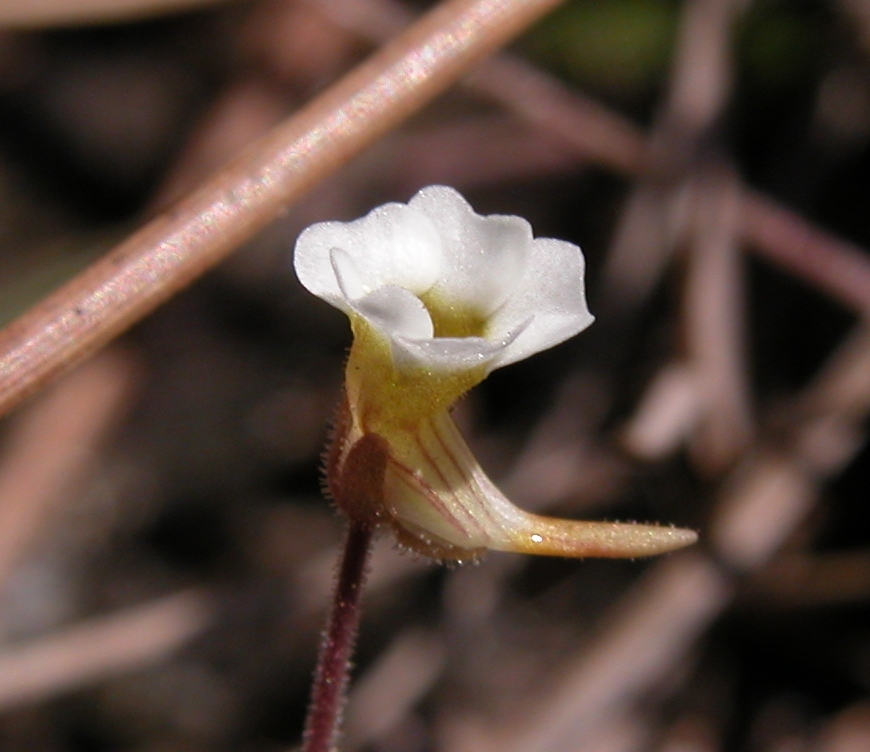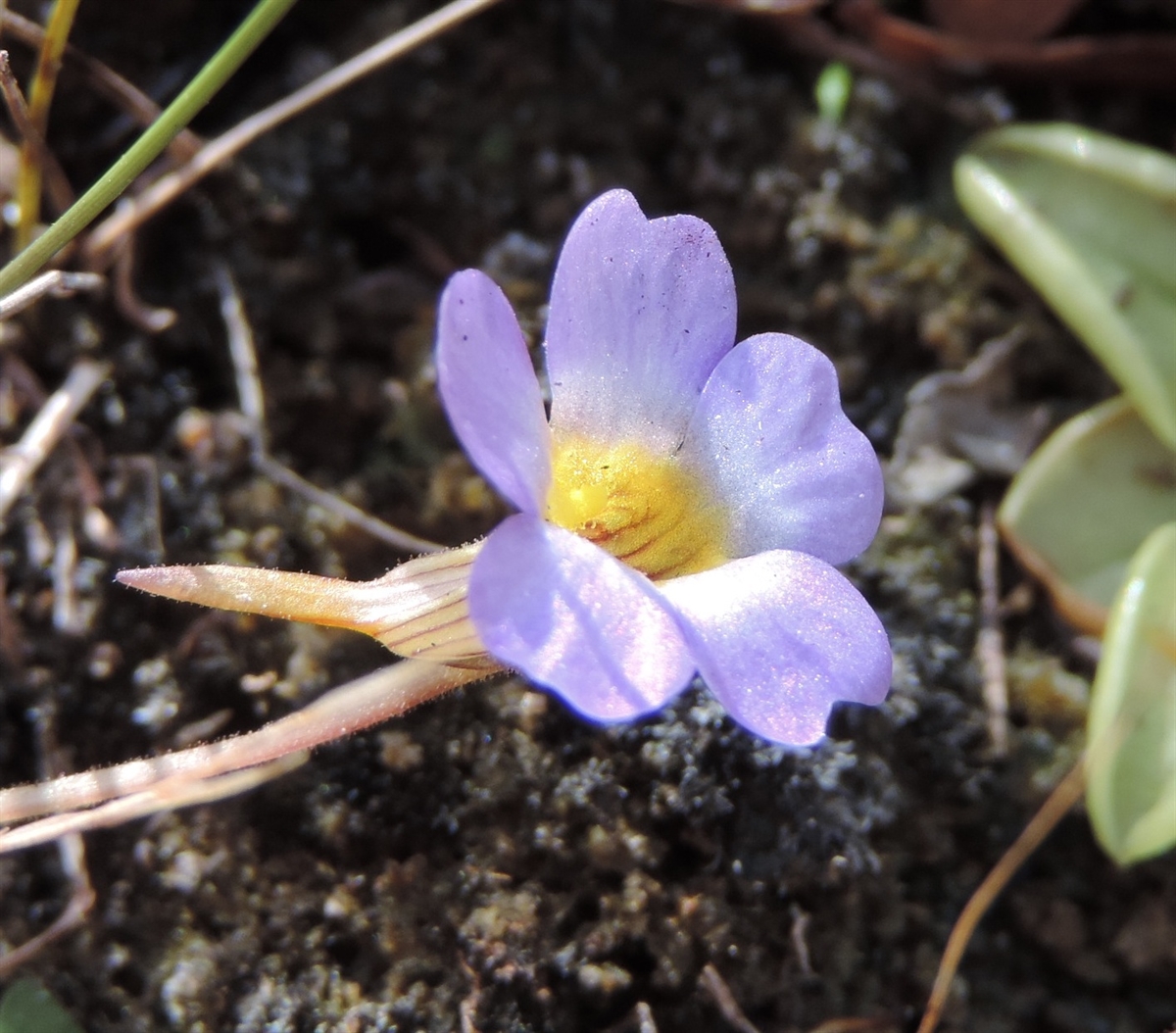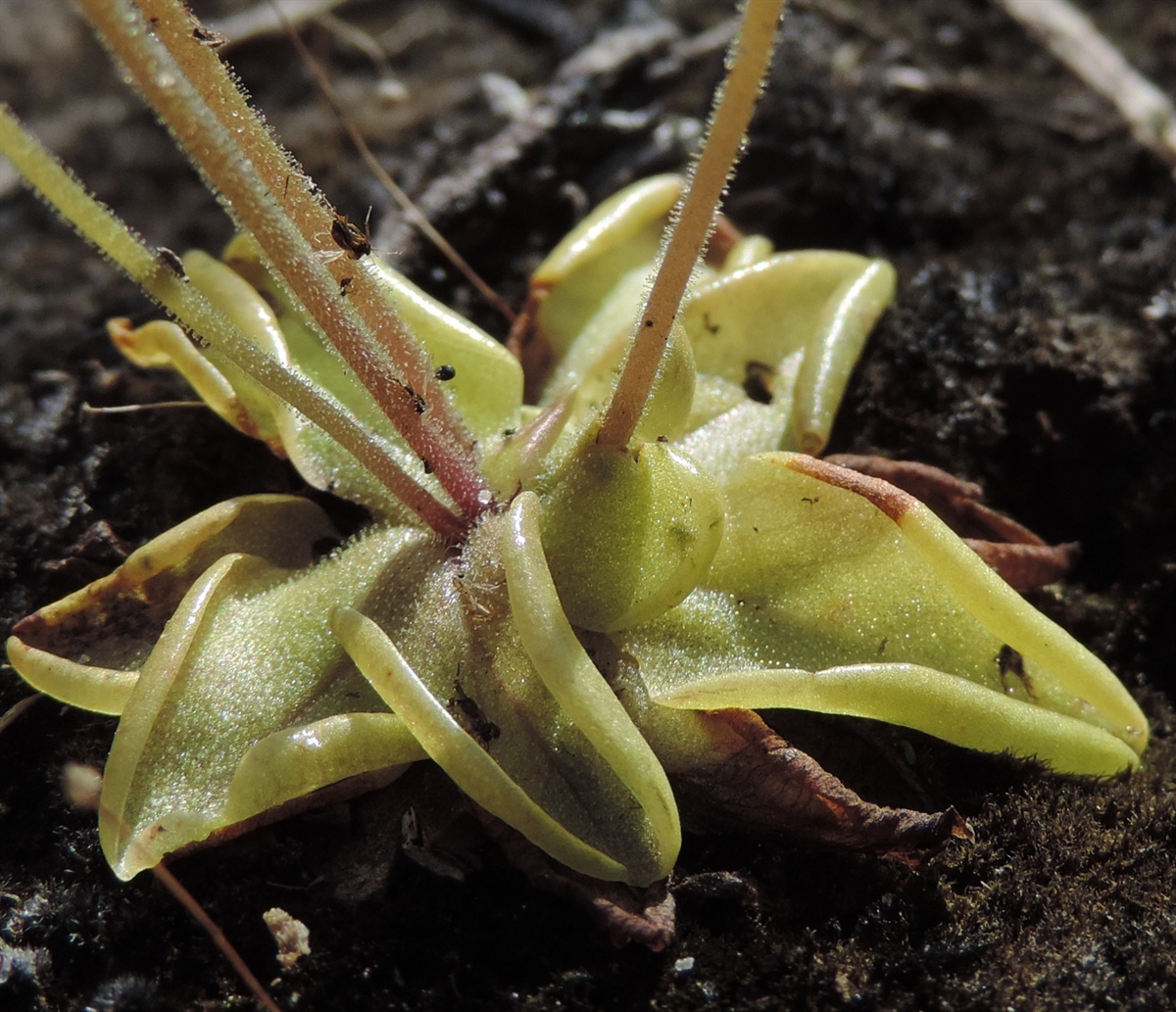Habit: Pinguicula pumila grows as a terrestrial herb. The fleshy leaves are in a basal rosette, elliptic to obovate, to 3 cm in length and covered with sticky glandular pubescence. Leaf margin may be inrolled and the leaf apex obtuse to rounded.
The complete, perfect, zygomorphic flowers are arranged solitary on a glandular scape that is up to 20 cm in height. The calyx has 5 fused sepals. The corolla has 5 white or purple petals with the lower petal enlarged creating a nectar spur at the base of the flower. There are 2 stamens. The carpel has a superior ovary with a single locule. The fruit is a capsule at maturity.
Habitat: Pinguicula pumila grows in ephemeral Fresh Water Wetlands and in low lying areas in Pine Woodlands that flood regularly.
Distribution: Pinguicula pumila occurs in the northern Pine Islands of the Lucayan Archipelago and the southern United States.
Medicinal/Cultural/Economic usage: Pinguicula pumila is not known to used medicinally in the Lucayan Archipelago.
Pinguicula pumila is a carnivorous plant that traps insects in the sticky glandular pubescence that secrete enzymes that dissolves the insect and it then absorbs their nutrients primarily for organic nitrogen. They typically grow in nutrient poor soils.


